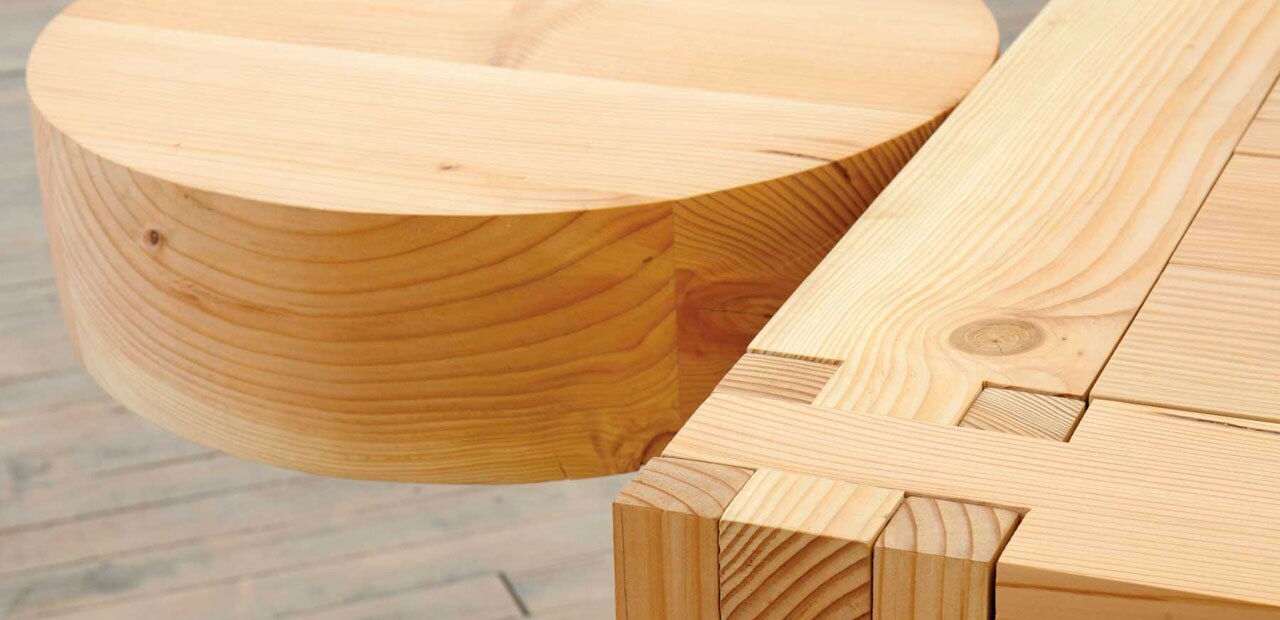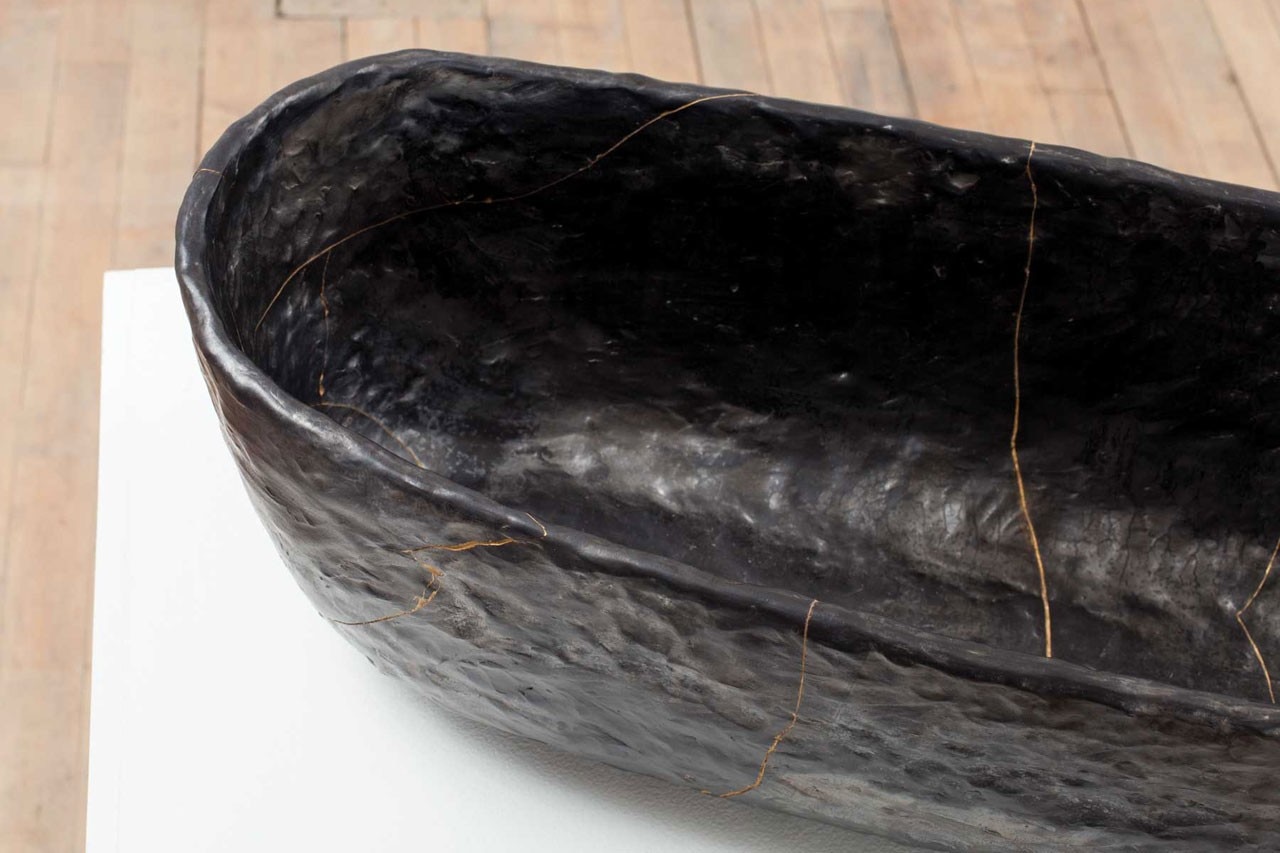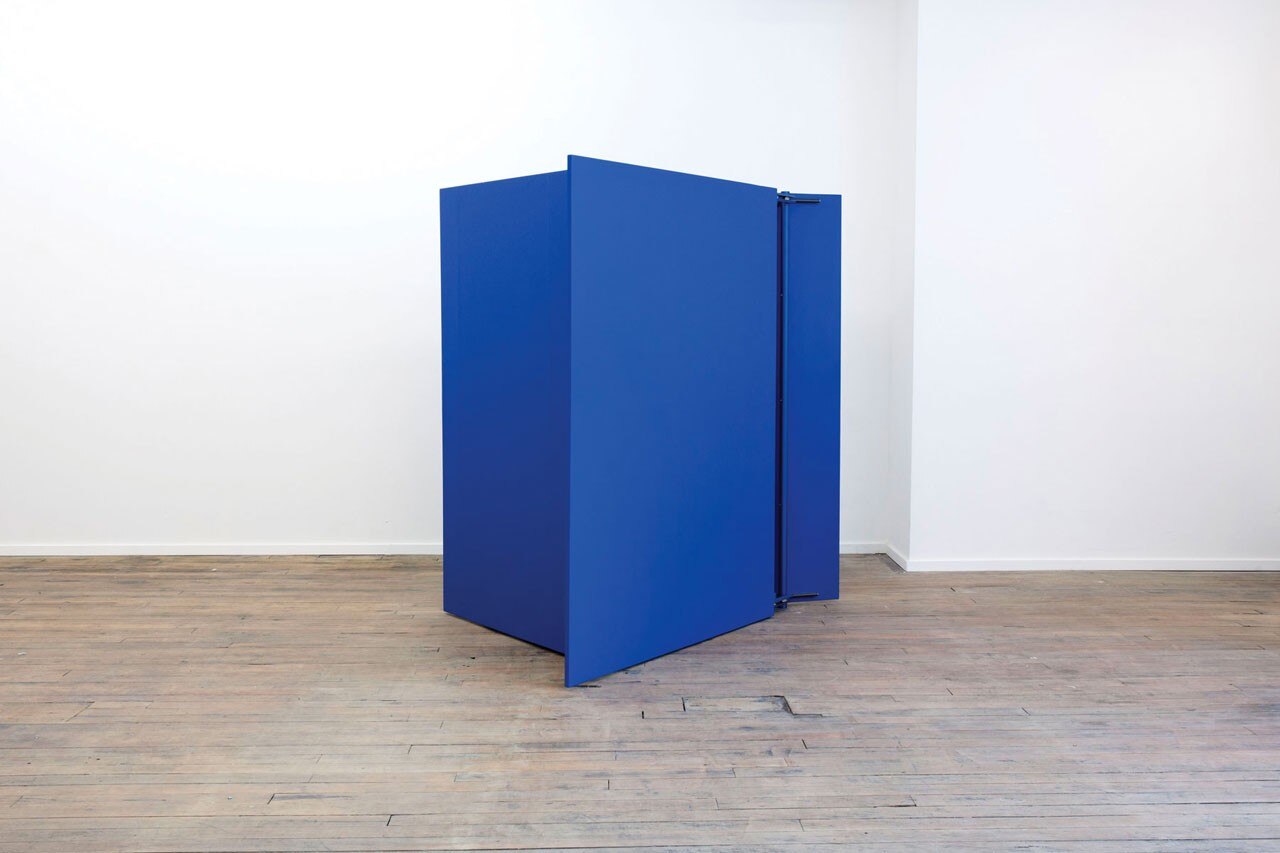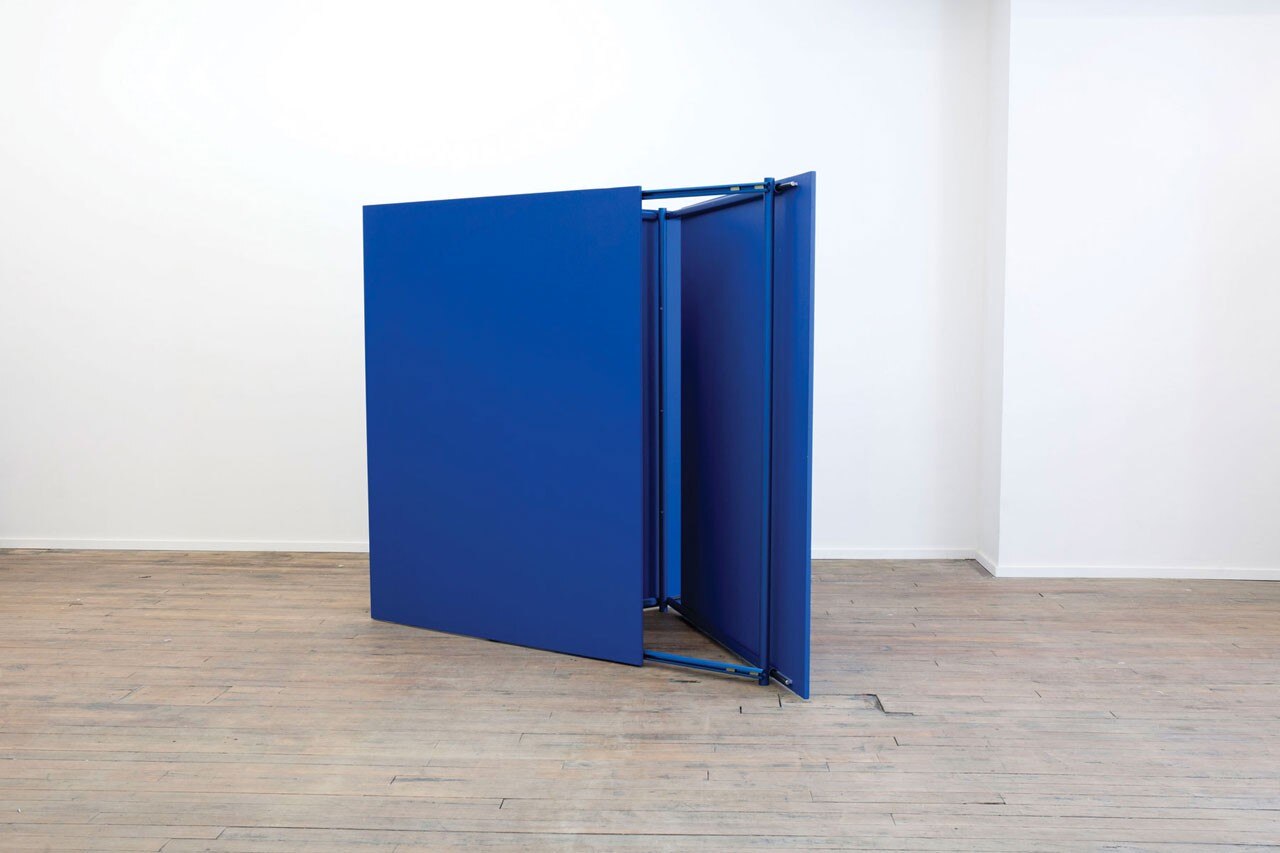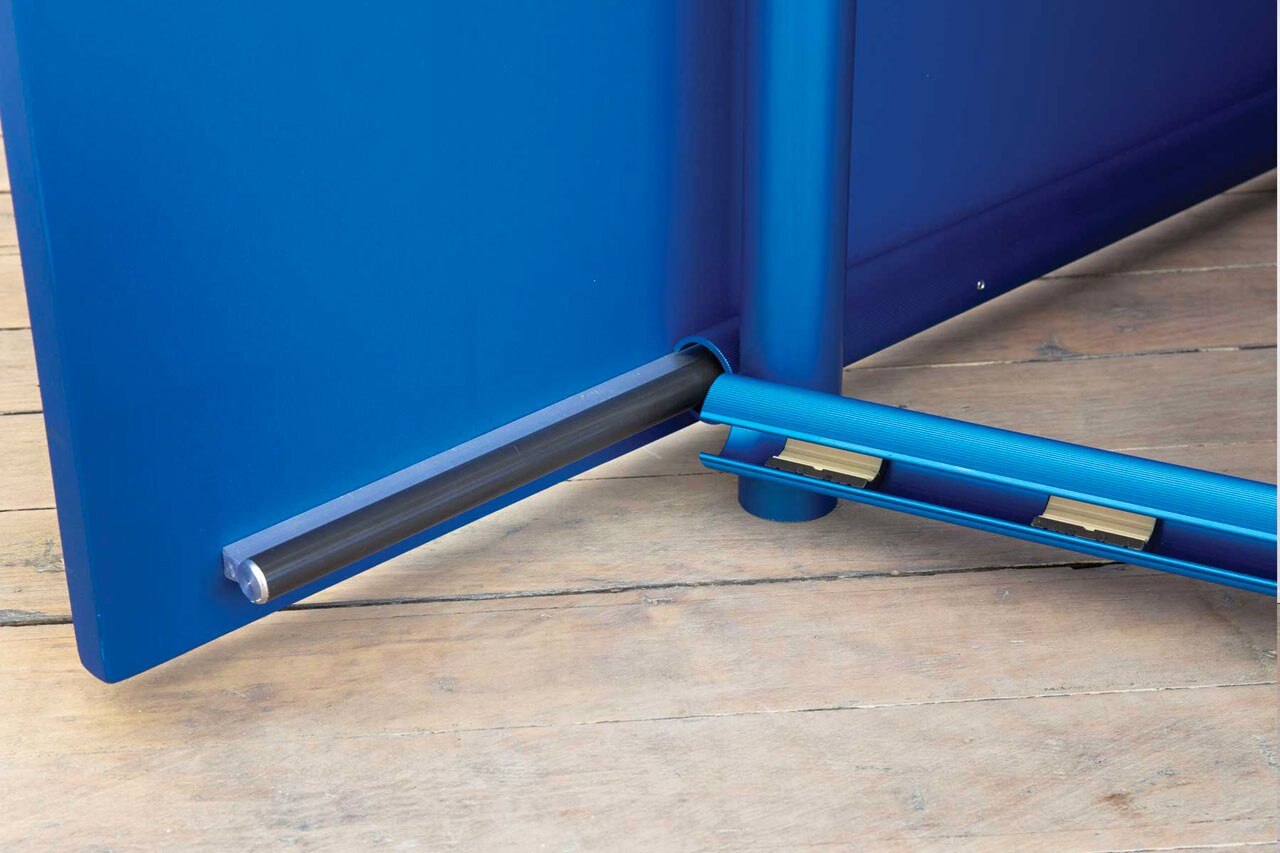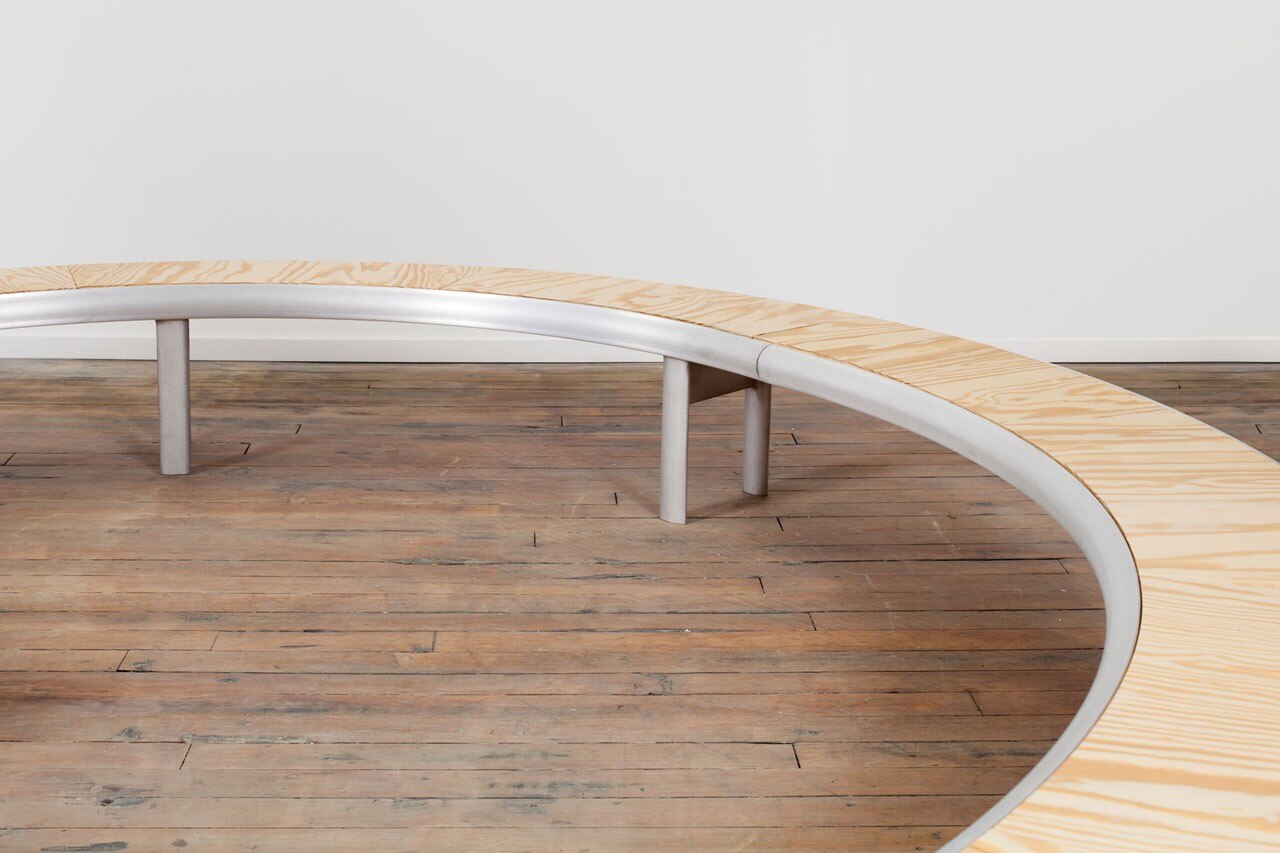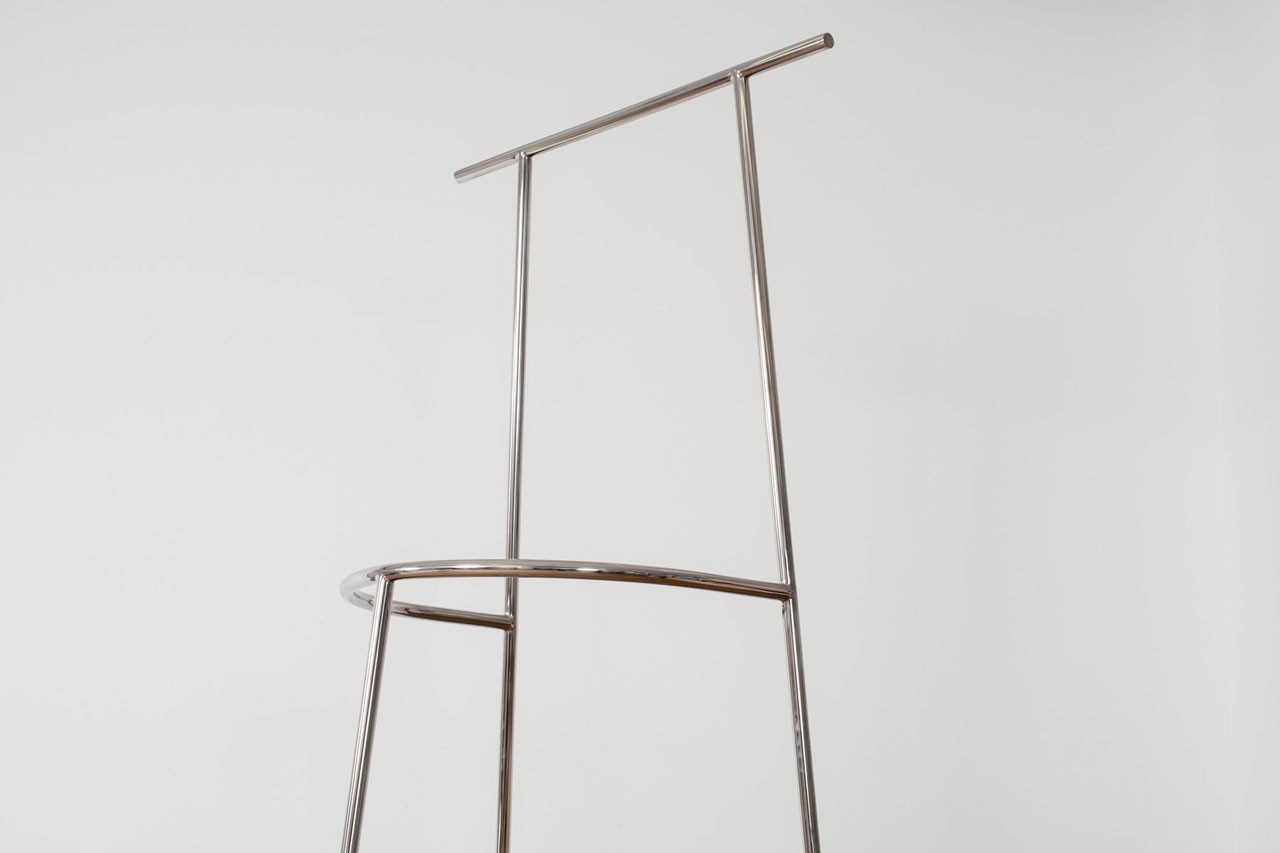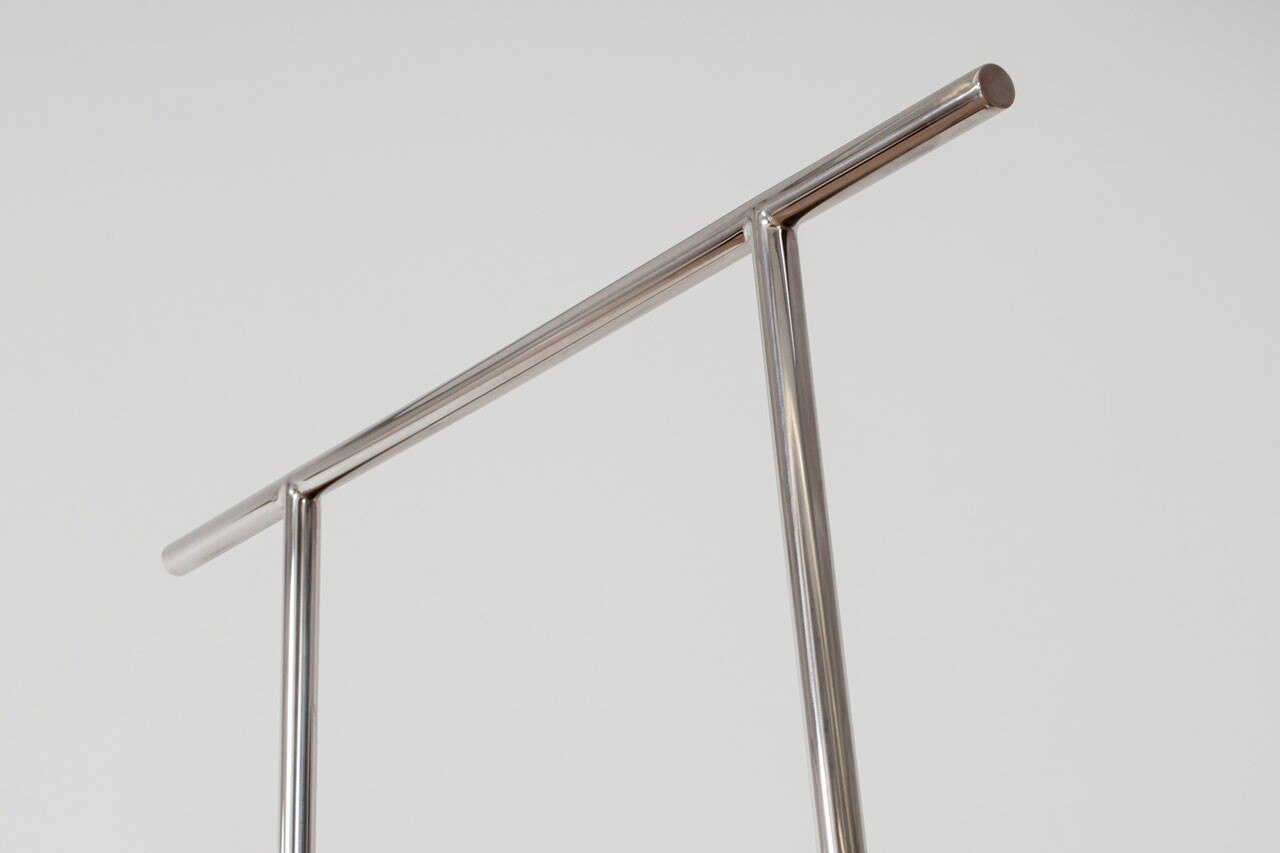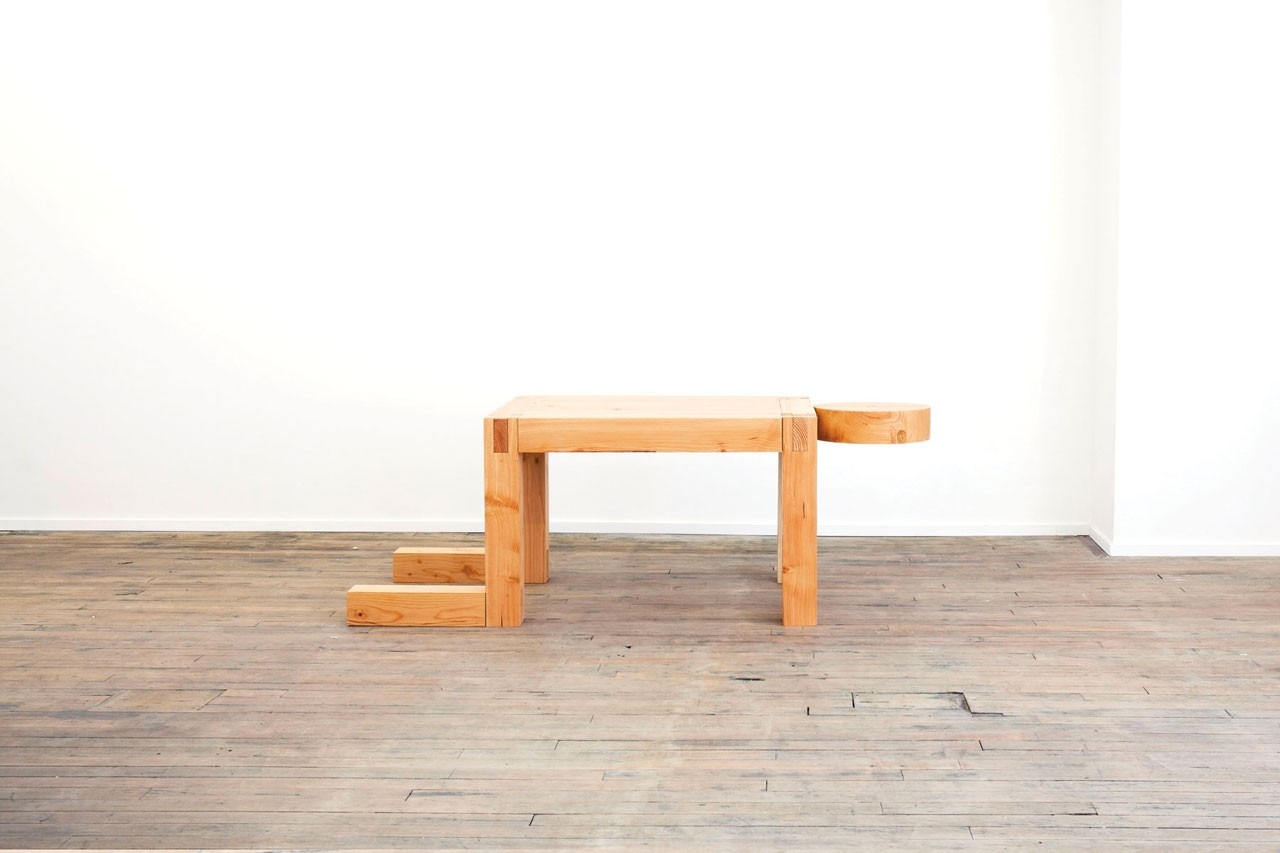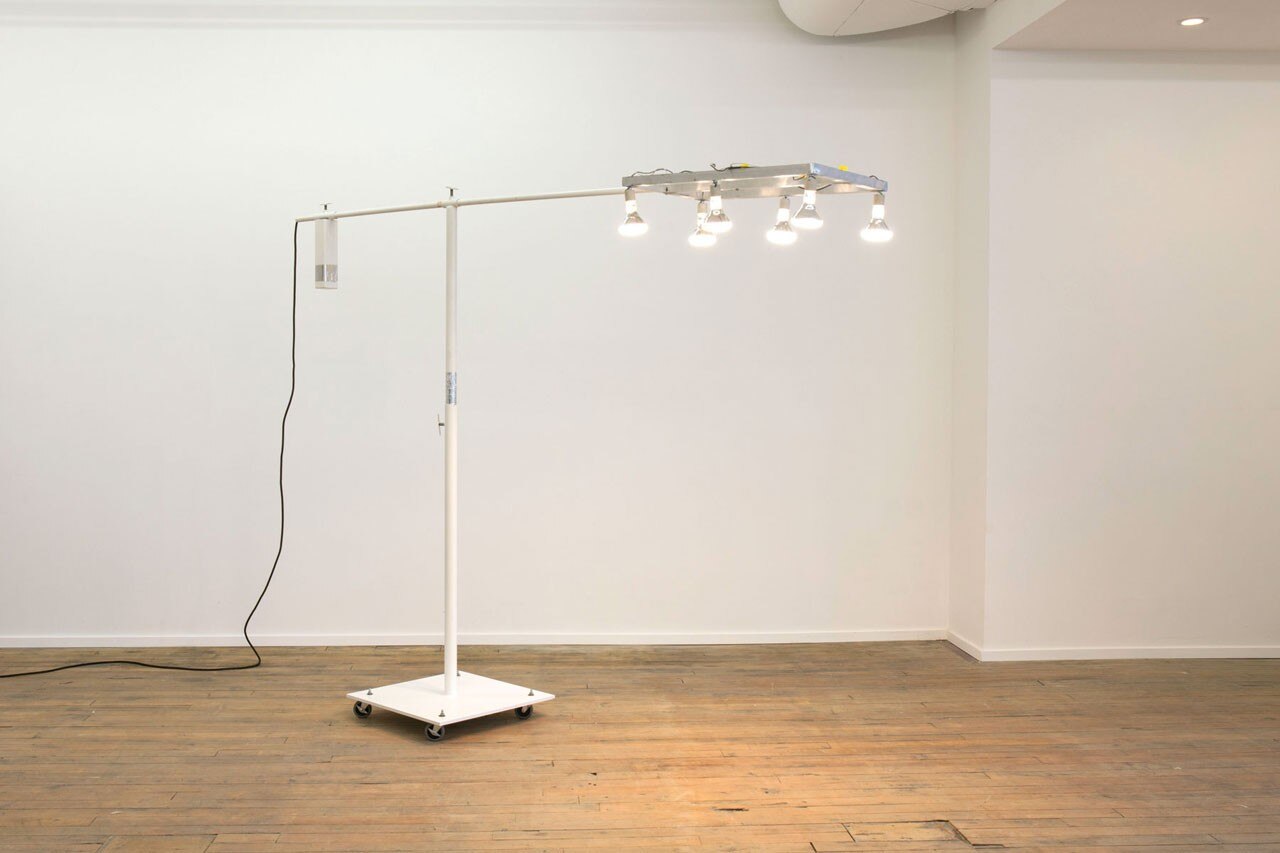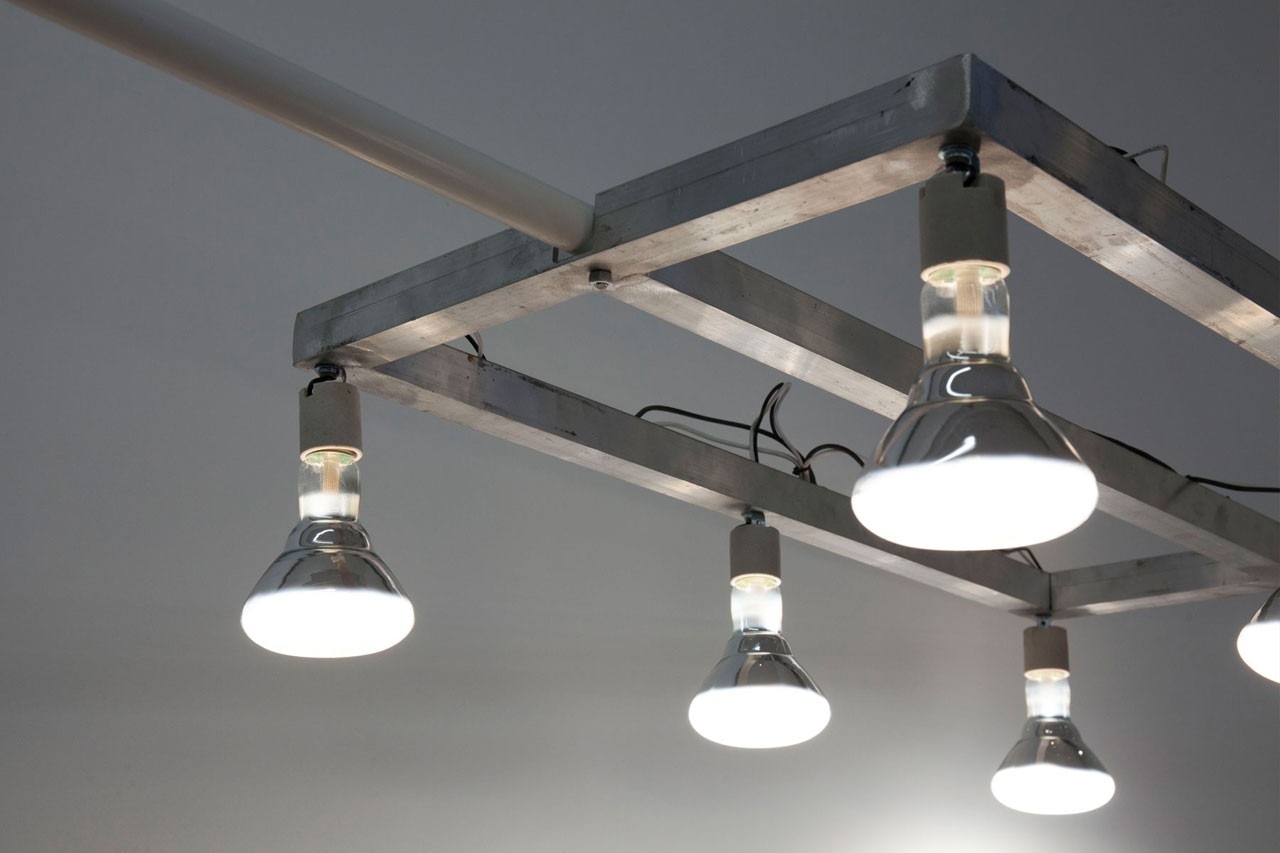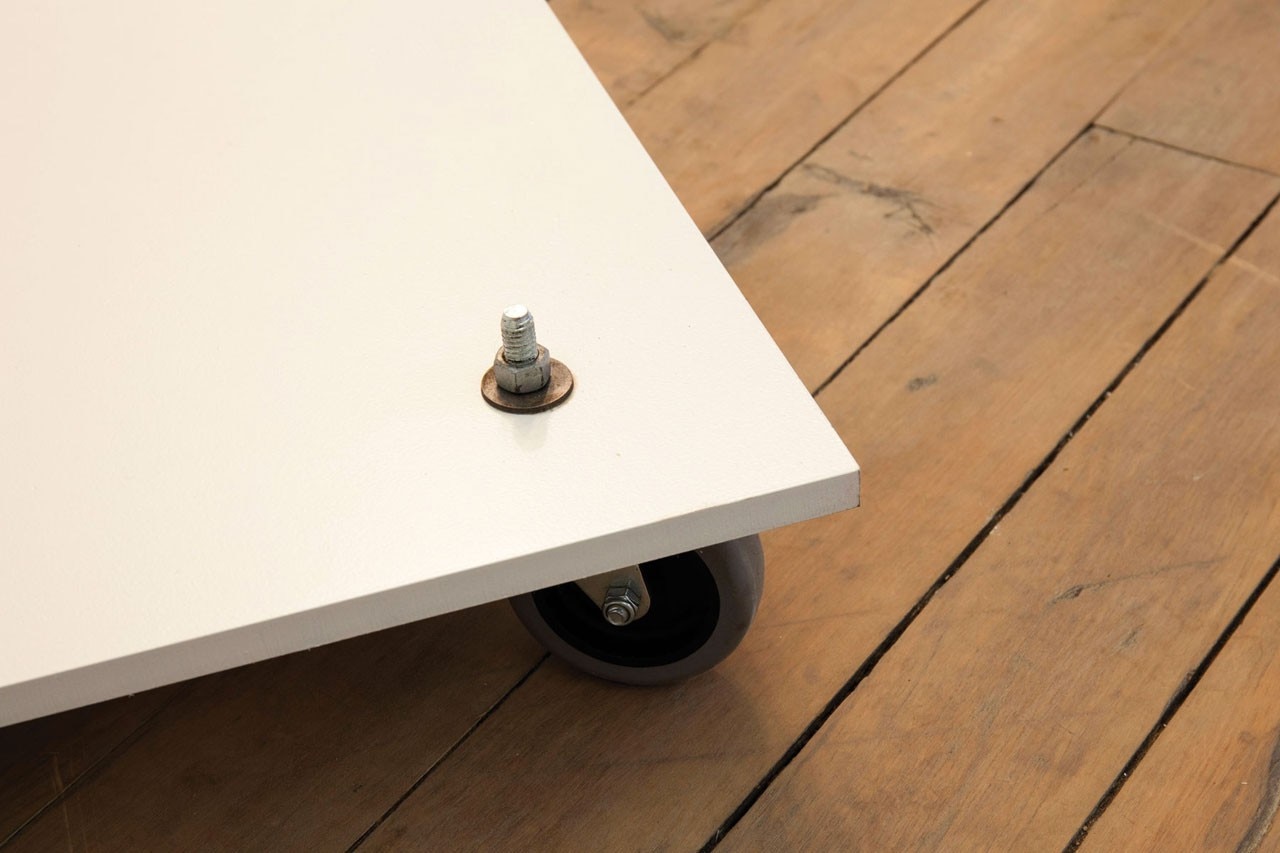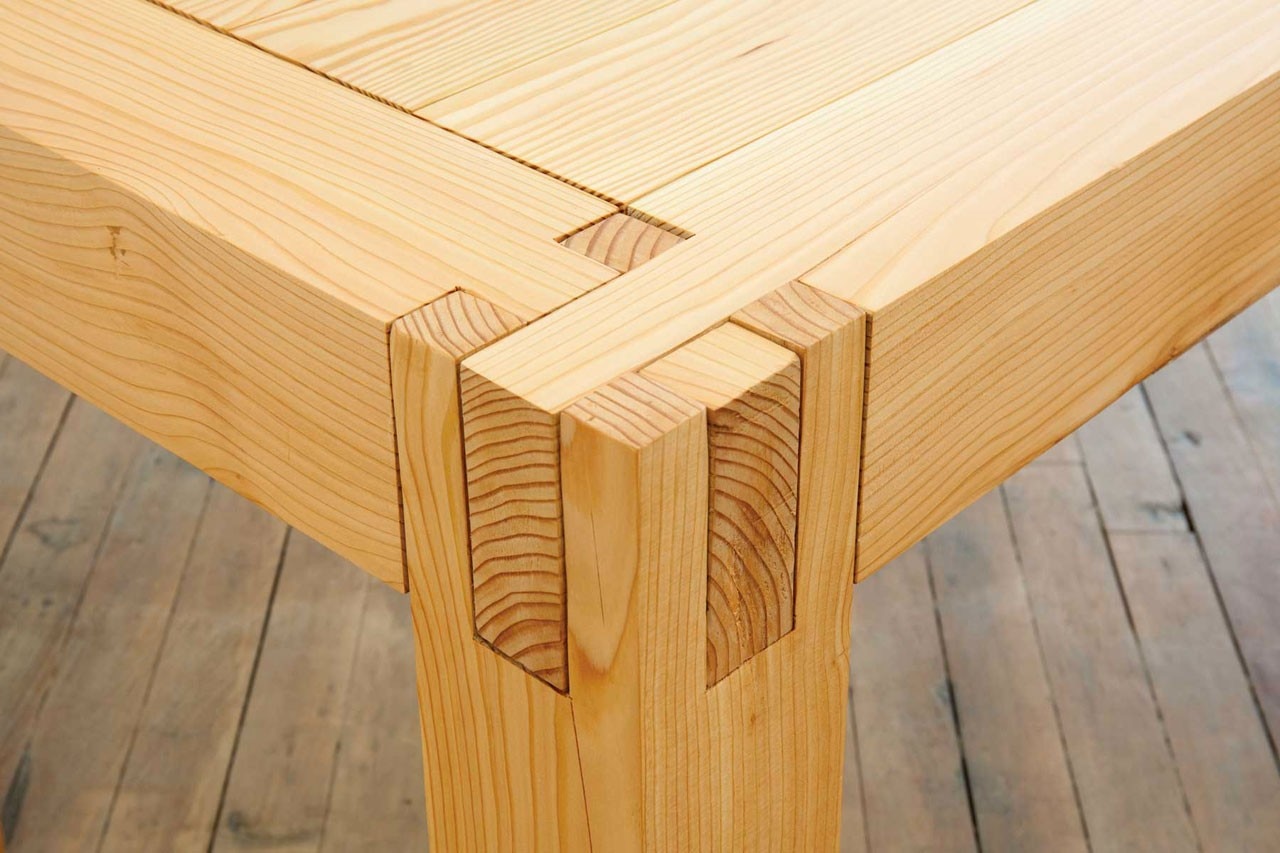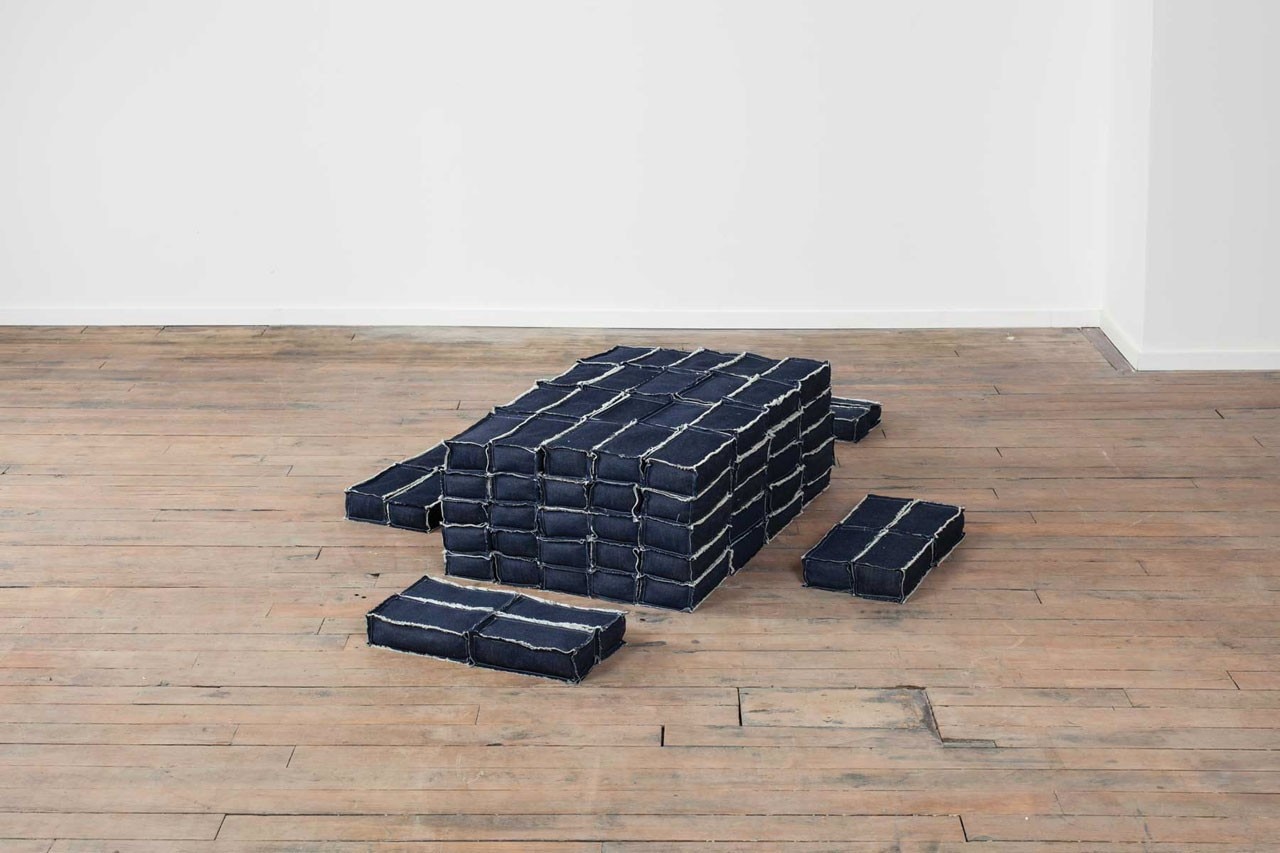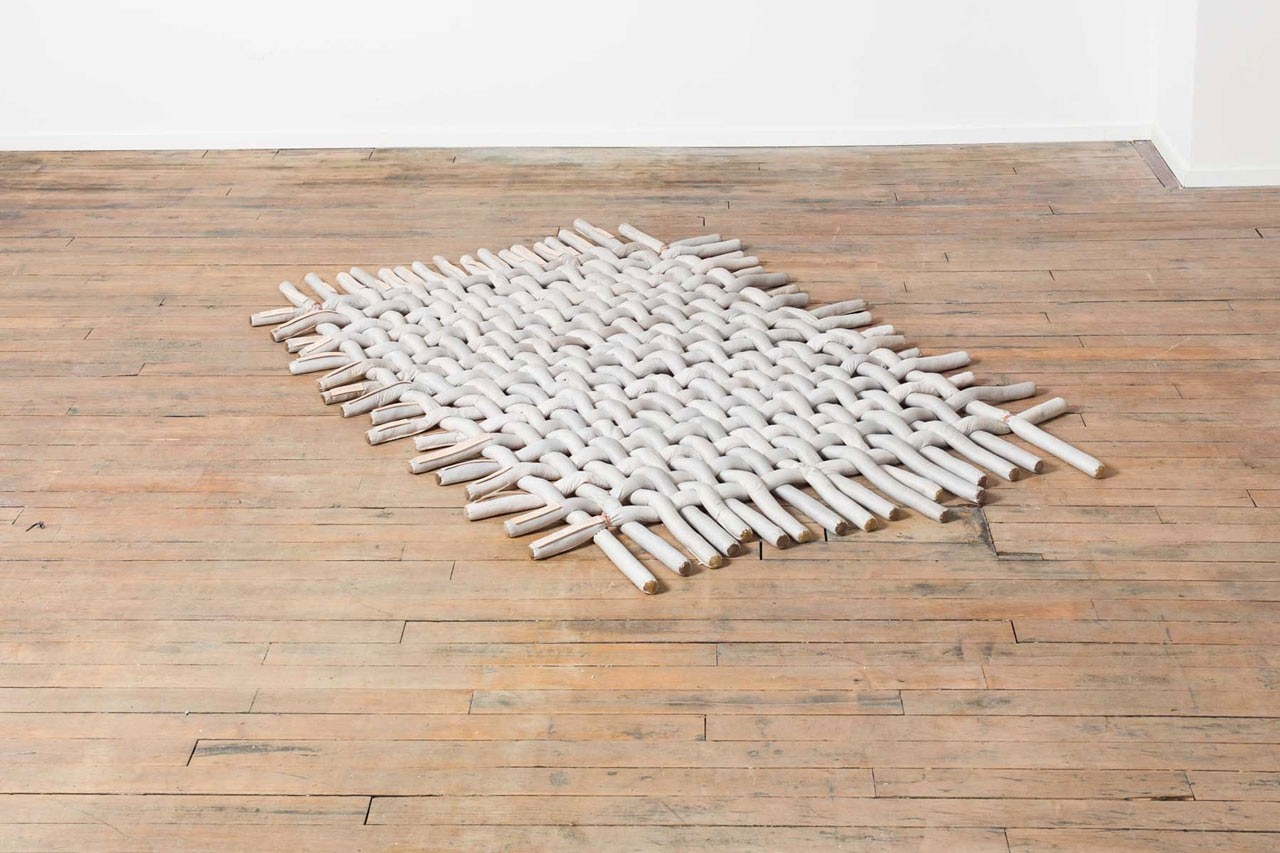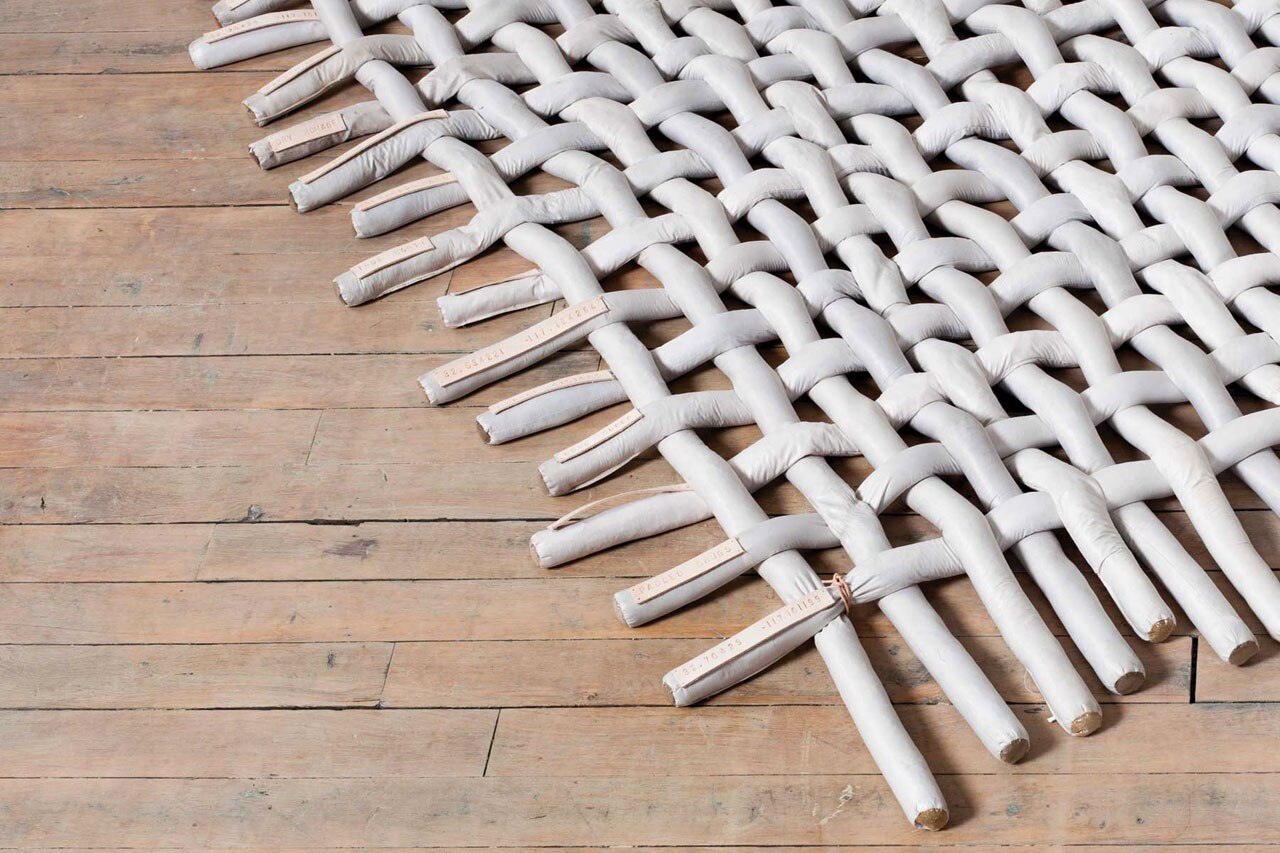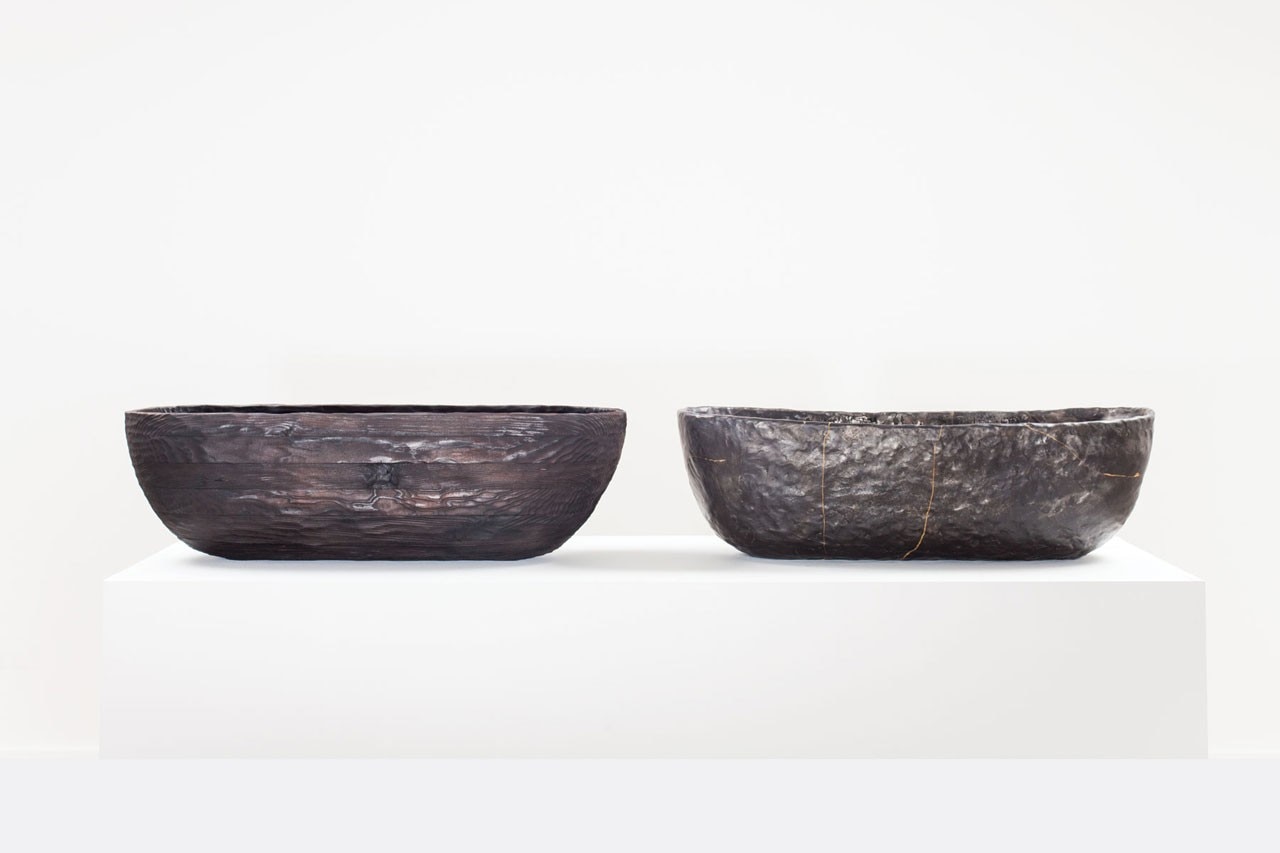
With the philosophy of the Crystal Chain in mind, and instead of focusing on typical contemporary methodologies or materials per se, the designers were encouraged to go in a different direction, focusing on creating something simultaneously new and timeless. Reflecting on ideas or forms that never change, regardless of time or location and concepts and designs with similarities that are shared amongst every film portraying “the future” or every archeological dig of ancient time.
The nature of “timelessness” is something enigmatic and untangeable – as defined, “Independent of time; eternal, ageless”. Furthermore, “a state of eternal existance believed in some religions to characterize the afterlife”. There are typologies that persist throughout all of these periods and regions – basic human needs that permeate our subconscious to the point that they are often overlooked and considered benign or vernacular.
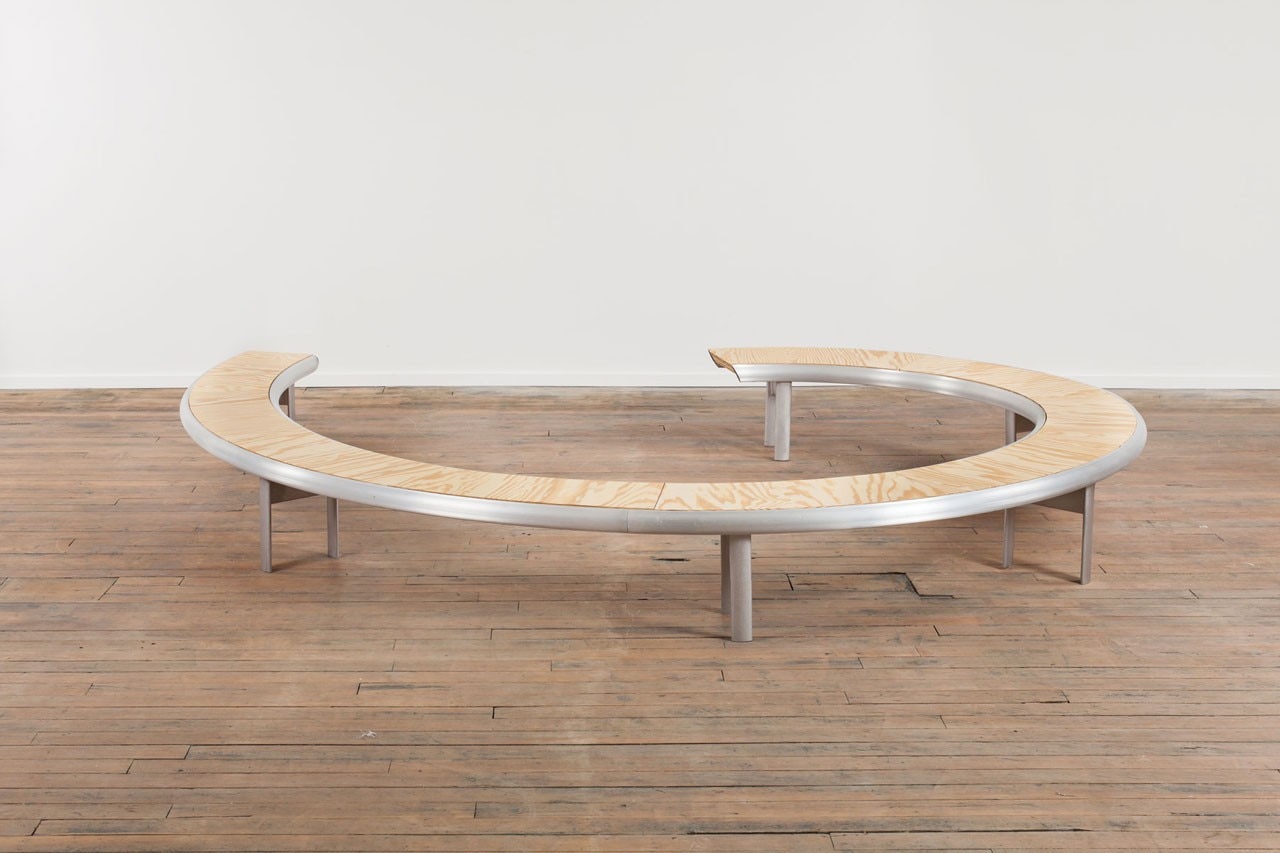
Jonathan Olivares
REB (Rolled Extrusion Bench)
The REB is made from a rolled aluminium extrusion, which can be formed into any contour, allowing the bench to be made in relation to specific architectural contexts. The rolled extrusions host a seating surface, and the entire assembly is supported by cast aluminum legs placed at intervals along the bench. The bench engages spatial and social contexts, providing differentiated seating areas for individuals and groups.
The project takes its departure from an aluminium extrusion technique that was developed by Zahner—the Kansas City-based metal fabrication company—as a skeletal support for curvaceous metal cladding. This technique has been used to manufacture significant works of architecture such as Frank Gehry’s Pritzker Pavilion at Millenium park and MIT Stata Center, and Morphosis’ Emmerson College in Los Angeles. While the extrusion is typically hidden behind walls, Olivares REB exposes the extrusion, and introduces the technique to the scale of furniture.
Simultaneously in development with Zahner is a cloud-based software that will allow architects and designers to customize the REB into any shape for specific installations
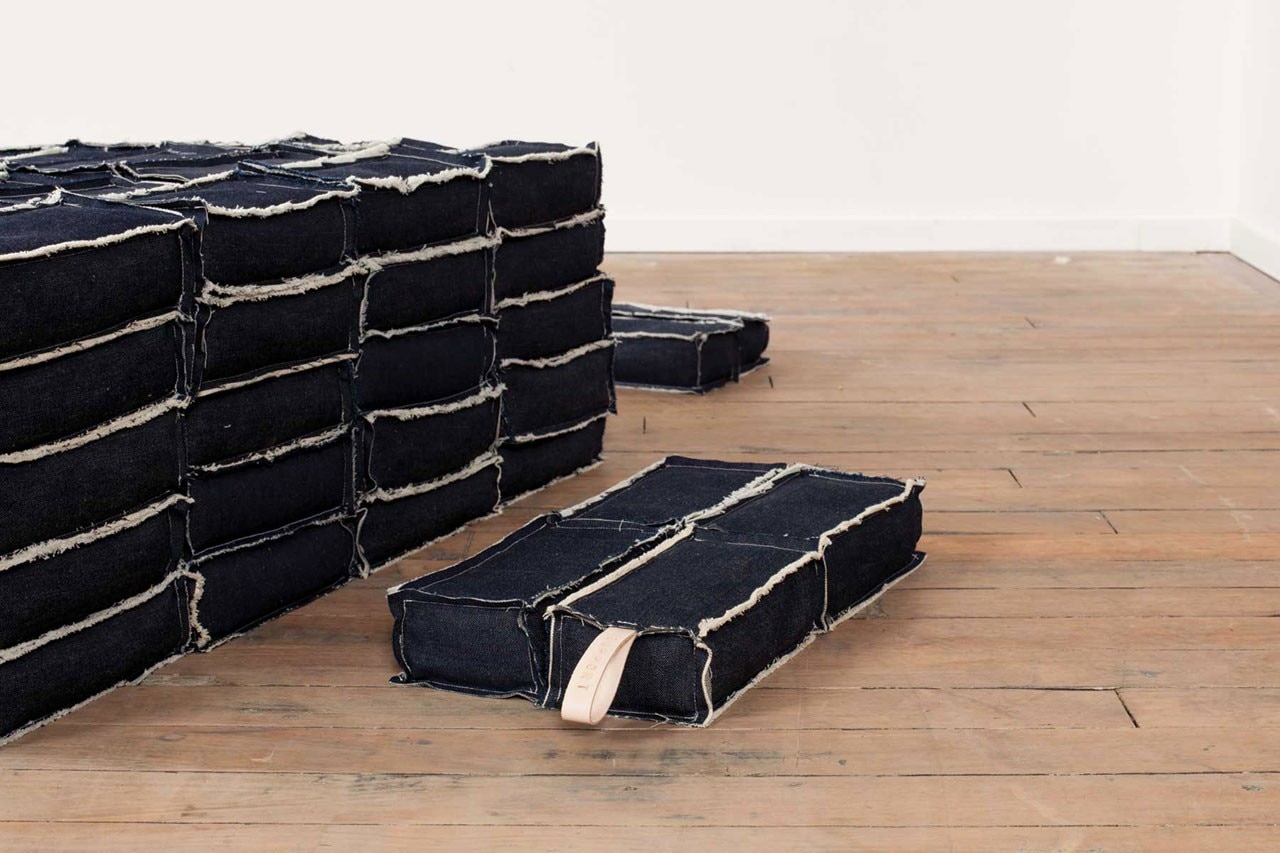
Tanya Aguiniga
Support
“The project is based on using my body to mould myself to my daughter’s needs as an infant. I became her house, food, bed, and blanket. These bricks made of humble denim are modular to accommodate most of a users spacial and functional needs. They can be used as sustenance in case of an emergency and can hold heat when warmed in the sun. The arrangement of form is intended to be done with others to promote collaboration and community.”
Tierra
“Made of woven soil from places that are important to me. Based on soil being our true ground, and my belief that objects with history are more lasting in our households. Also explores our attachment to soil/land as regards to proprietorship and war.
In making an incredibly personal floor covering, I went on a journey to reconnect with places that haunt my dreams. The places my soul believes is home, and places that have shaped who I am now – despite wanting to distance myself from painful memories. Some of my collection sites include my grandmothers’ house, under the bridge my mentor and father figure committed suicide at, the beach i had my first kiss and drug experimentation at, and the US/Mex border fence. Each site was photographed and writing for each with accompany the piece. Each site has an identification tag in writing and in coordinates to encourage people to map out their geographical location.”
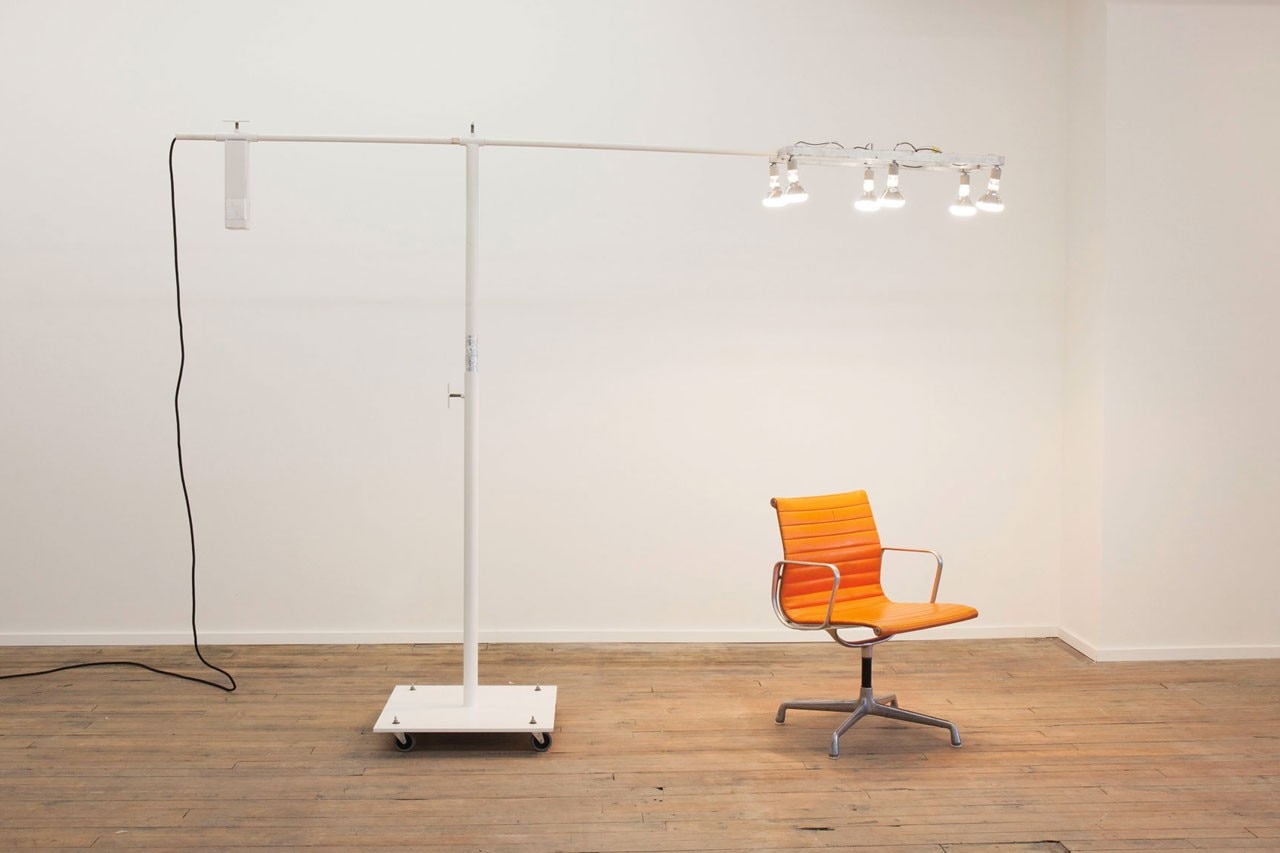
RO/LU
Truth Lies In Experience No Matter How Incomplete It May Be (man/desk/table)
The Sex of Art Is Narrative
“This notion that the designed object is a beginning not an end. Something that illuminates and darkens different things. something that lives it’s own life. Goes further on its own than we could take it. That causes ideas and new conditions. That tells a different story later. We want to ask more of design. We want the function of these pieces to be a lens. The opposite of a reductive iterative process that produces and end result.
What if light is a new language, not a function. And the way Rauscheneberg used these lights is actually a new way to think about all the work we all do. That these objects, a light and a desk, would position us in a spot to begin participating with the order outside ourselves. We could use these objects to teach us to act like surfers. To collaborate with our life and work. in a sense? design objects as self help”.
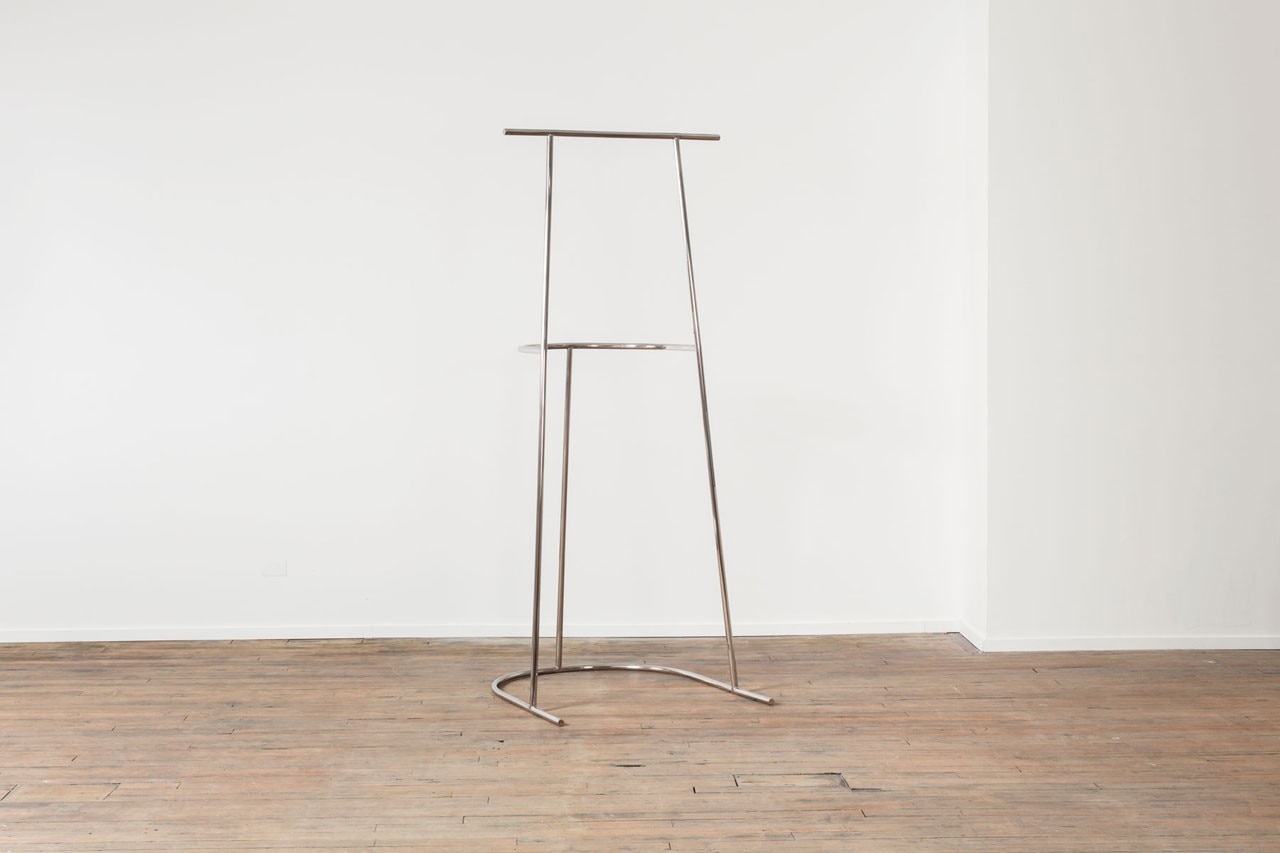
Leon Ransmeier
Action Object
Resting Object
“A fundamental understanding of one’s surroundings can be found in the physical relationship of the body to the environment. If the environment is human-built, then the opportunity for this understanding can be designed. Form and material communicate meaning, inherently placing human-built objects within a historical context and a framework of value systems. Still, the direct physical relationship of our bodies to space and objects transcends history. Many of our human needs persist, despite social and technological progress. The usefulness of furniture is apparent in its proportion because the scale relates specifically to our body and it is open to being used.
What I find most compelling in this project is the opportunity to find apparent usefulness in ambiguity, and vice versa. I am seeking to create objects that communicate physically and directly while remaining typologically indistinct as furniture. The materials and finishes used should playfully question the personal associations and reactions to the objects. I am going to make an object for rest, and an object for action. Both objects will be made from steel tubing, a material often associated with early modern furniture.”
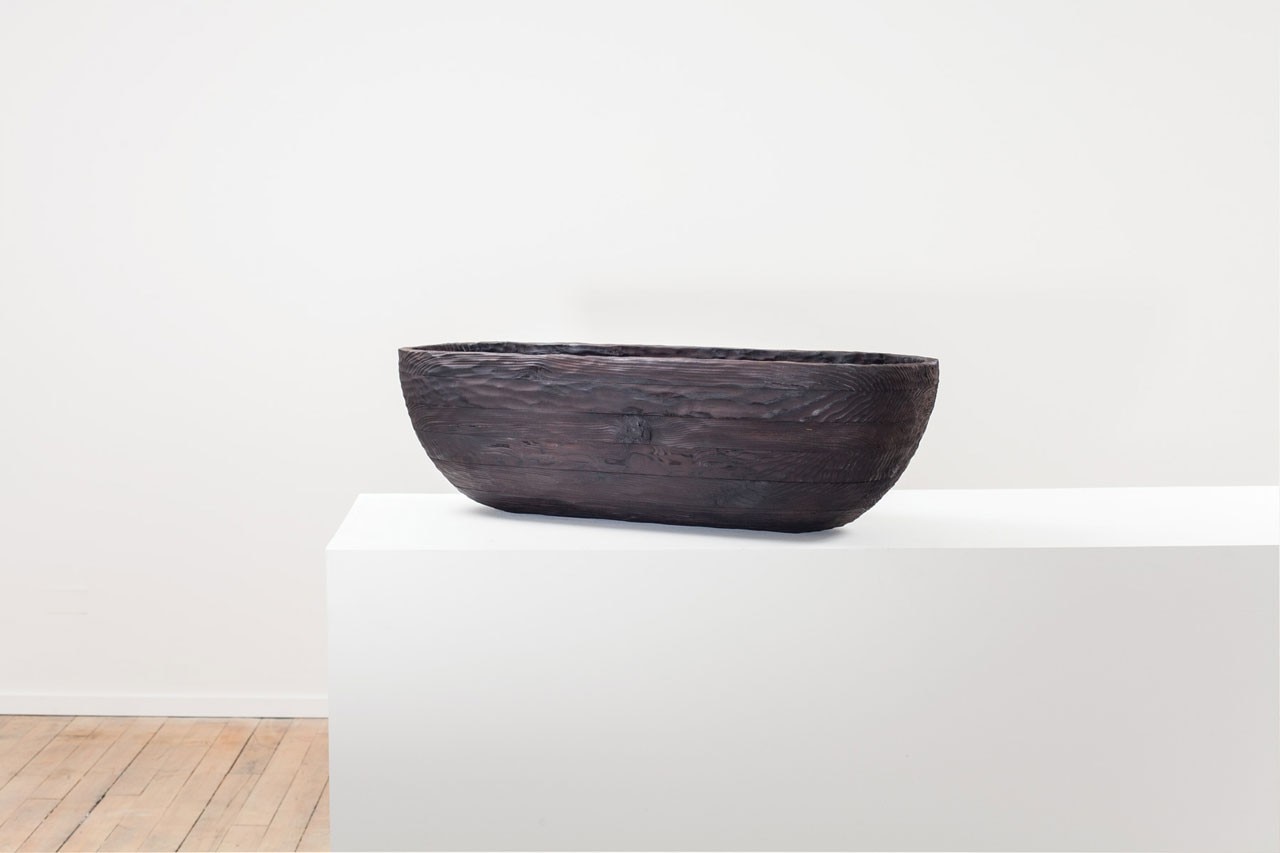
Anders Ruhwald
Laminated Pinewood Bowl, Charred. Smolder-fired Earthenware Bowl, Cracked and Mended
The pinewood bowl is made of floorboards from an abandoned building. These boards have been laminated together, then carved out and eventually charred in the surface.
The ceramic bowl is made from terracotta clay that has been smolder-fired with leftover woodchips from the carving of the bowl causing the terra cotta to turn black. During the firing process the bowl cracked. These cracks were mended with gold leaf.
Untitled
The piece has an incandescent light bulb fitted inside the ceramic form which- after it has been turned on for a while- emits heat. The whole piece is black as not to give any indication of the light it holds, only the cord suggests that it might have some utility.
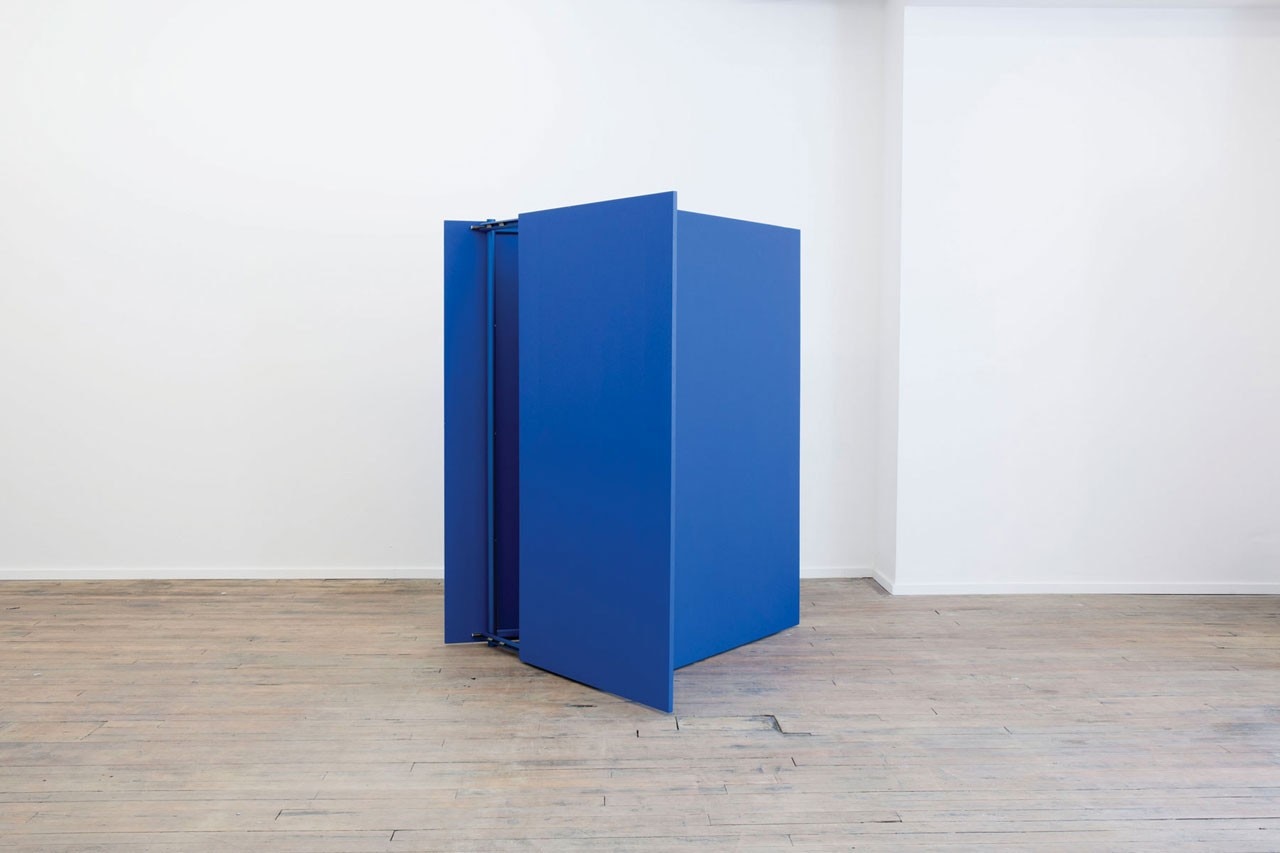
Jonathan Muecke
Blue Cabinet
BC (triptych) is a cabinet without a top or bottom. The three sides adjust, expanding and contracting the internal volume and exterior presence. The relational variability is stabilized by the colour blue.
Jonathan Muecke’s Design Miami Pavilion is an experiment in application of Muecke’s object making approach to a scale neither architectural nor domestic. Conceptualized as a “respite from” its surroundings, DMP offers visitors a place for pause and decompression amongst the stimulating whirlwind of Design Miami/ and Art Basel Miami Beach. Envisioned as a space without detail, DMP consists of a single, “indistinguishable” construct that filters and focuses vision though its predominantly closed perimeter and optically flattening color field walls.
Muecke’s barrier orientation also looks to calm by limiting even its select features to a few. A partly open drum sits at the center of DMP, with a single diagonal breezeway running though as entry and exit, which is forested by a low colonnade supporting a translucent canopy that shelters the whole structure. The drum’s walls are painted with color theory basics: complementary red and green coat its interior while red’s primary color partners, blue and yellow, flock exterior walls.
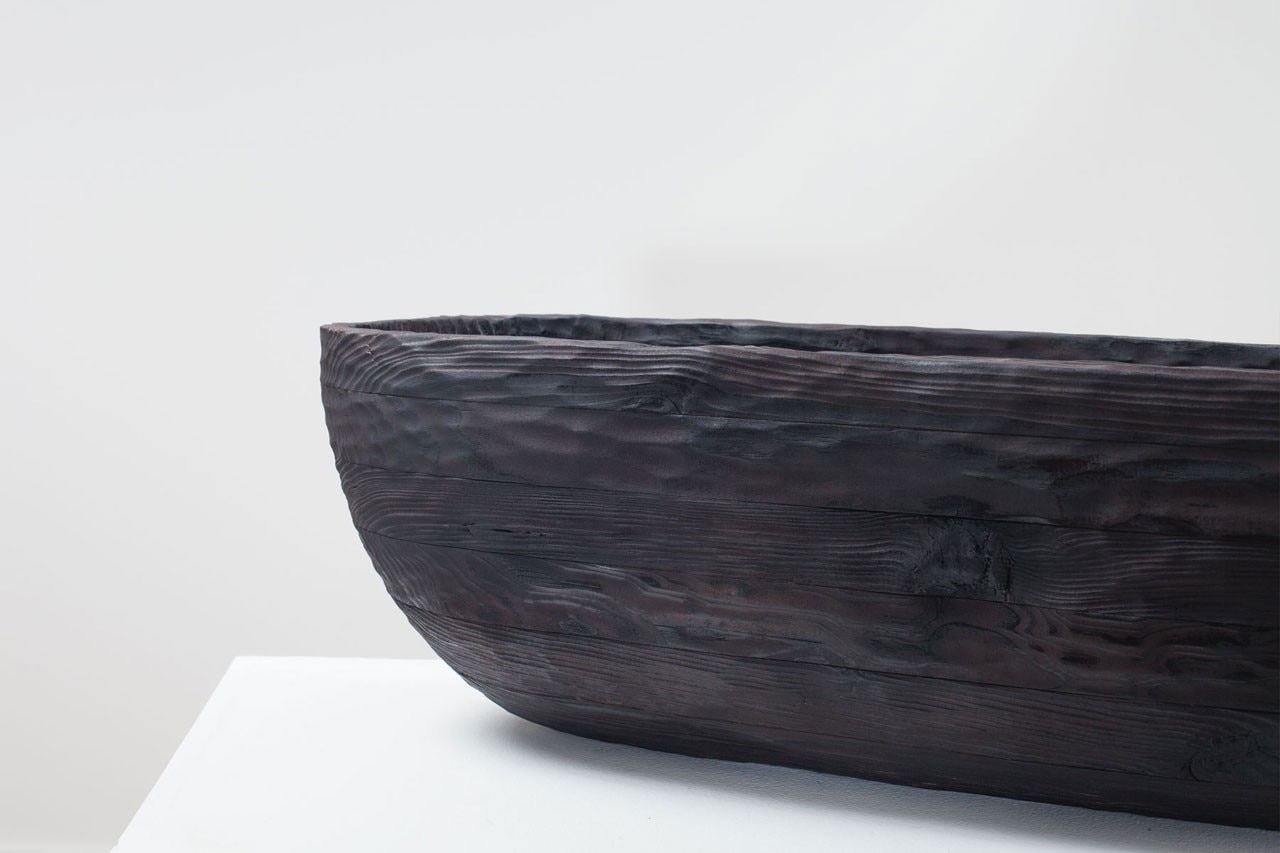
until November 7, 2014
Future Tropes
Volume Gallery
845 W Washington
Blvd, 3rd FL
Chicago


